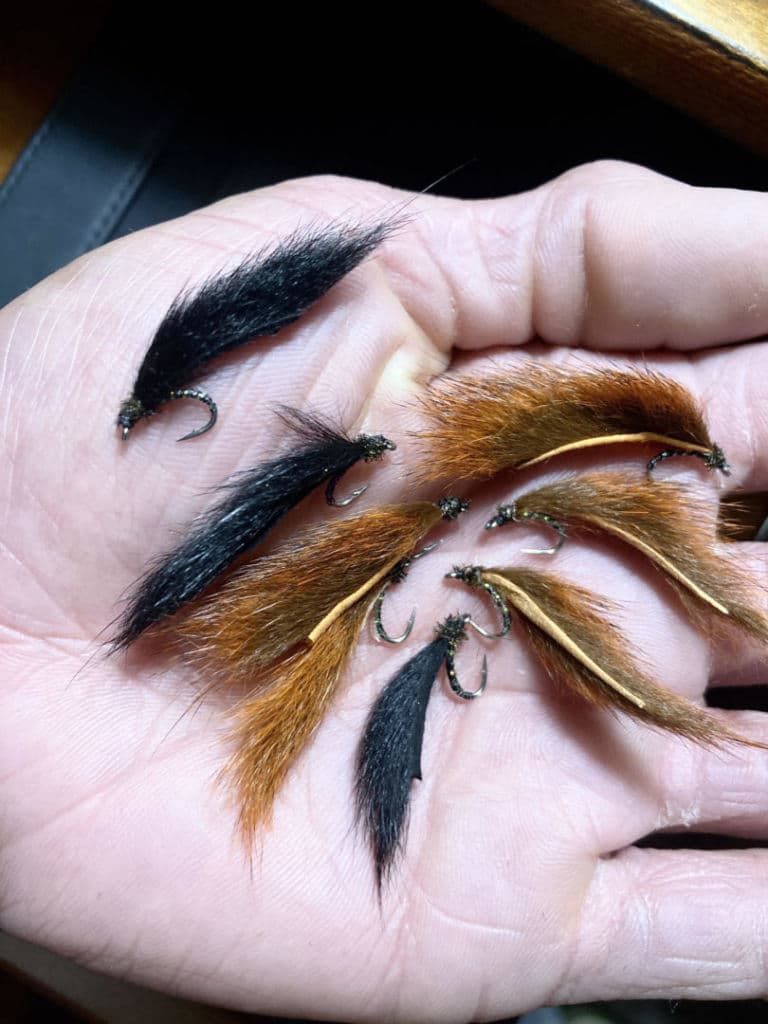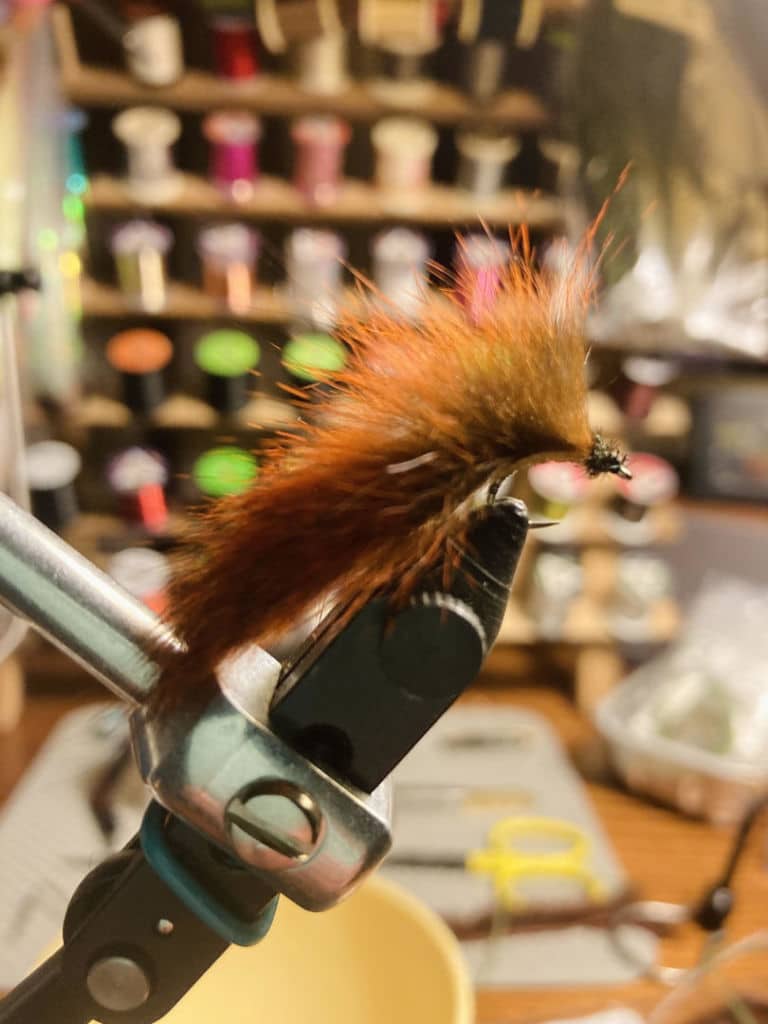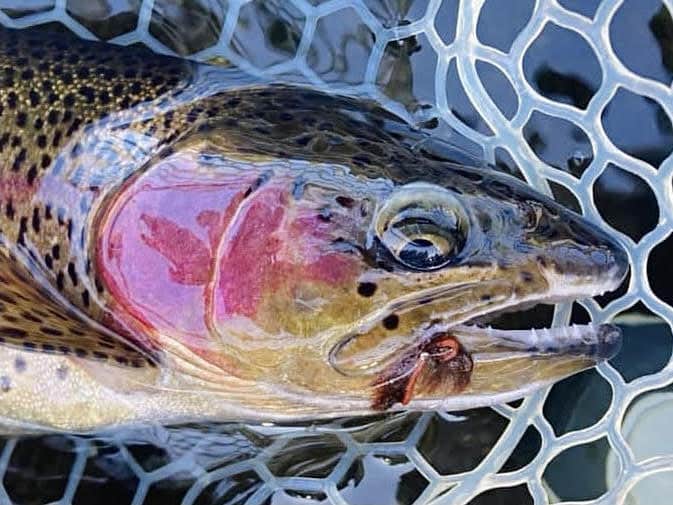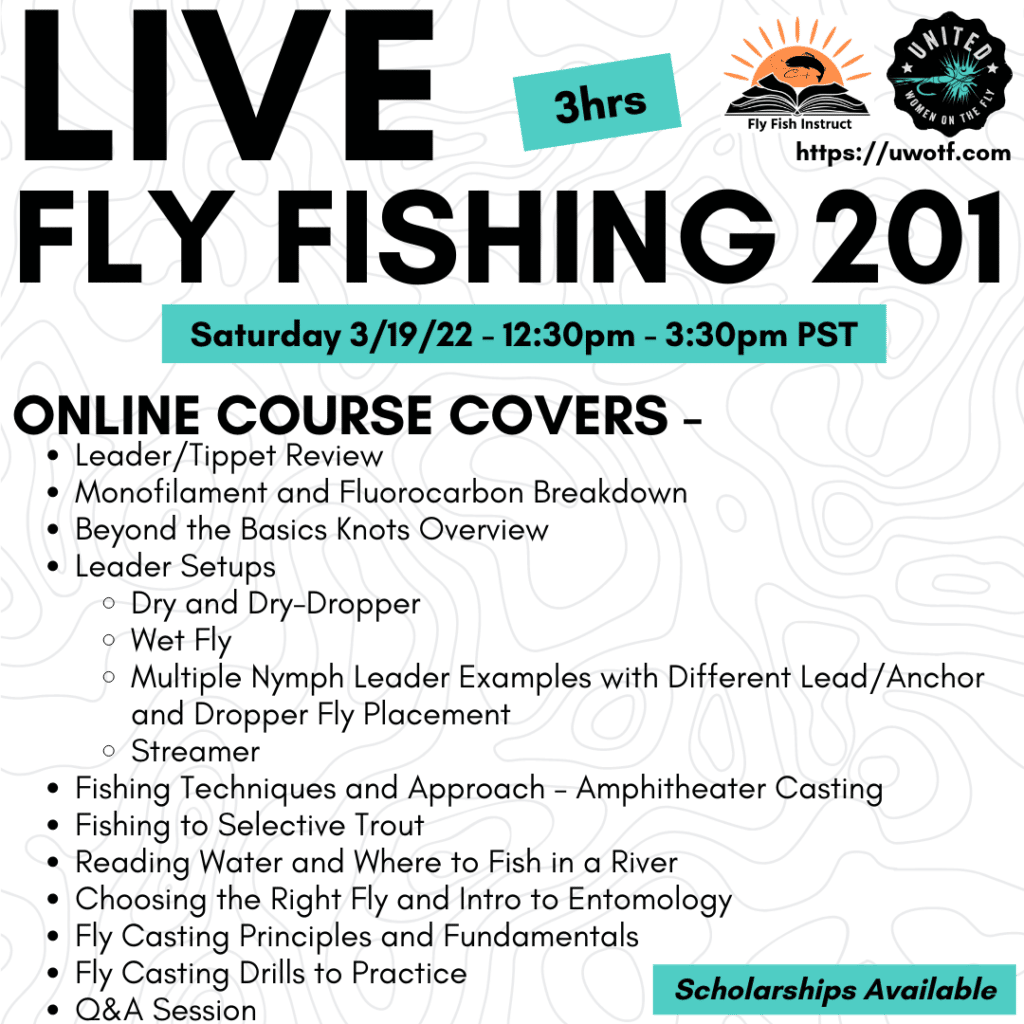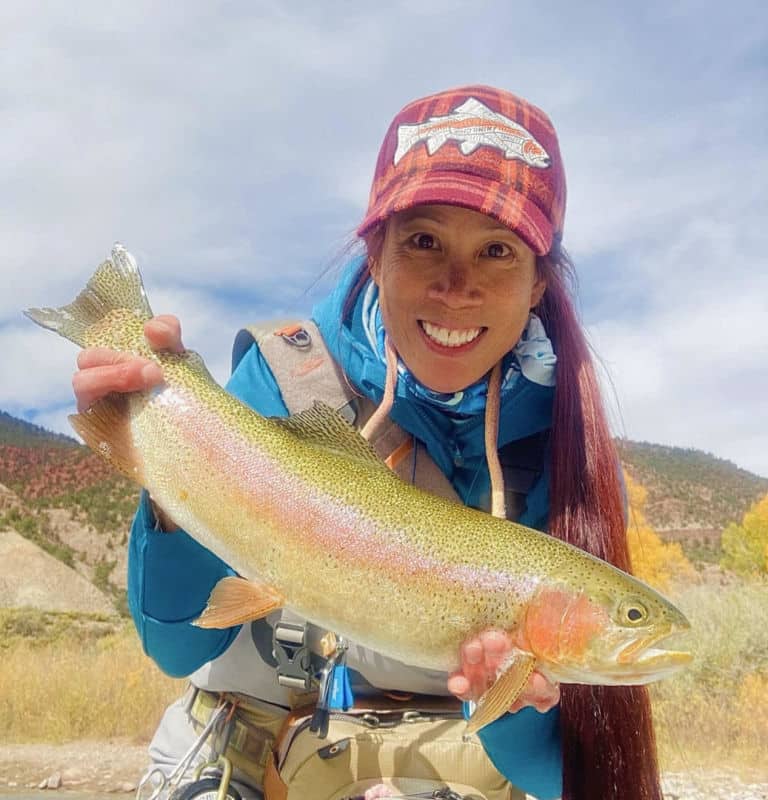Did you know leeches are native residents in our local rivers and lakes? Some of my greatest days on the river have been fishing the Mayer’s Mini Leech. Leeches exist in virtually all matters of freshwater lakes, ponds, freestone streams, and creeks. They are prolific in shallow coves with verdant growth but can be found in most stillwater settings, from shoreline waters to the darkened depths of lakes. Because they are prominently found in freshwater, they are eagerly snarfed by trout and many other fish.
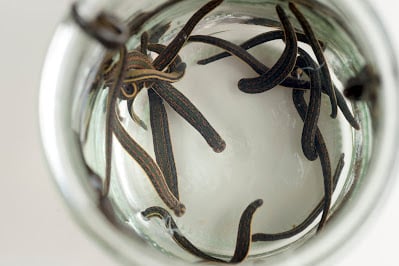
Size and Colors
Leeches are a significant year-round food source for the trout. They are a common aquatic worm of ringed or segmented worms in the phylum of the annelid. Leeches are flattened, elongated worm like creature with a sucker at each end. Their colors can be found in olive, brown, black, or grey. Size range can be a 1/2 – 3 inches in length. They can grow very large up to 8 inches in length.
Feeding
They feed on detritus, or decomposed organic material and animal matter such as worms, insect larvae, and other decay that deposits to the bottom of rivers and lakes. Leeches can be found in warm, safe, shallow water where currents are minimal. Under drought conditions, leeches can create a mucous-lined cell, then burrow itself into sediment and remain dormant until water returns.
Reproduction
Leeches reproduce in the spring. All leeches are hermaphrodites of which they have both female and male reproductive organs. They reproduce sexually by intertwining their bodies together. The leech male organs releases an encapsulate sperm sac that affixes its way through the skin to the other leech to the ovaries and fertilizes the eggs. Fertilization occurs where both leeches become impregnated simultaneously. The mother leech forms a strong, glutinous cocoon around the egg mass from its glands and bounds it to the substrates like rocks and plants, or buries it in the mud.
The cocoon is enriched with nutrients for the young leeches necessary for survival. The young emerge from the cocoon several weeks later and resemble that of a microscopic adult leech. Leeches become mature in about a year. Many leeches may only reproduce once or twice in their lifetime. They typically die after reproducing once. Leeches are not capable of regeneration, but only through sexual reproduction. A leech can live up to 2 – 8 years. Maturity and life expectancy varies with species of leech.
Fish with Leeches in the mornings and evenings
During bright times of the day, they will hide in rock shelters, sticks and other structures. Leeches can be active all day, but the early morning and evening hours are often when they come out of retreat. They swim by extending and contracting their bodies with an undulating motion like a snake. They will drift the current to travel to other locations. This is where the dead drift presentation is significant in your fishing presentation. It can be incredibly effective for the trout seeking a sizable meal.
Many of my fishing friends know how successful I fish with Mayer’s mini leech. I enjoy tying these trout morsels, a very simple tie to learn. A fly fisherman should have some of these mini leeches in their fly box. See you on the river!
Mayer’s Mini Leech
